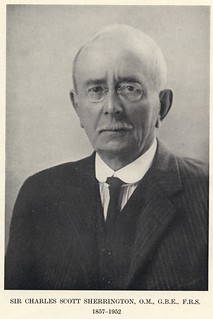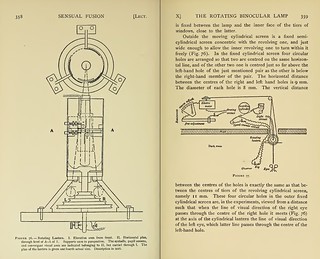- External URL
- Creation
-
Creator (Definite): Sir Charles Scott SherringtonDate: 1902
- Current Holder(s)
-
- No links match your filters. Clear Filters
-
Cites
 W. McDougall, 'Some New Observations in Support of Thomas Young's Theory of Light and Colour-Vision', Mind 10 (1) (1901), pp. 52-97, 210-245 and 347-382.
W. McDougall, 'Some New Observations in Support of Thomas Young's Theory of Light and Colour-Vision', Mind 10 (1) (1901), pp. 52-97, 210-245 and 347-382.
Description:'Interesting experimental difficulties... were occassioned by the reciprocal and often antagonistic influences exerted by one retina upon another in ways studied and described recently by Dr. W. McDougall.' (75)
-
Quoted by
 C.S. Sherrington, 'On Binocular Flicker and the Correlations of Activity of 'Corresponding' Retinal Points', Journal of Psychology 1 (1) (1904), pp. 26-60.
C.S. Sherrington, 'On Binocular Flicker and the Correlations of Activity of 'Corresponding' Retinal Points', Journal of Psychology 1 (1) (1904), pp. 26-60.
Description:notes that 'The experiments were the subject of a brief communication to the Royal Society's Proceedings, July, 1902, Vol. LXXI. pp. 71-76.' (27)
'I conclude that, with the intensities of illumination used in this research, although a binocular image does sometimes appear of slightly greater visual brightness than either of two similar uniocular images composing it, more often it has a visual brightness not perceptibly different from that of either of its two co-equal uniocular components. The case then falls within a general rule regarding binocular brightness attested by all observations that have borne on that subject throughout the present inquiry. Disc images of homogeneous surface, except for a cross-line, have been the objects of comparison. The rule was in my preliminary paper [note: ''Proc. Roy. Soc. LXXI. p. 75, July, 1902.'] stated thus: "the physiological sum of two luminosities, perceived through conjugate retinal areas, is of a value intermediate between the individual values of the two component luminosities." I think it better stated as follows: a binocular brightness compared with its uniocular components is of value not greater than the greater of those, nor less than the lesser of them; when free from oscillations of rivalry its value is somewhat, but not far, above the arithmetic mean of the values of the two uniocular components as expressed by the measures of the physical stimuli yielding them.' (49-50)








